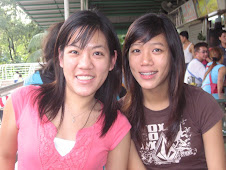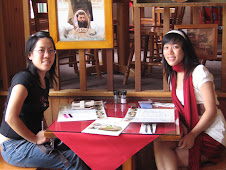
the indian dhoby
a number of indian dhoby men operated a laundry business in the neighbourhood that i lived when i was a young boy. then i was living at upper dickson road in the serangoon area. the white sheets, towels and clothings would be hanging on clothes lines strung between poles in the open field by the side of weld road.
when i shifted to towner road in the 70s, i came across a similar sight - a lot of washings being hung out in the open to dry. this was at st george's road, another housing development board estate, separated from towner estate by a canal. the laundry shop is also operated by indians.
a number of indian dhoby men operated a laundry business in the neighbourhood that i lived when i was a young boy. then i was living at upper dickson road in the serangoon area. the white sheets, towels and clothings would be hanging on clothes lines strung between poles in the open field by the side of weld road.
when i shifted to towner road in the 70s, i came across a similar sight - a lot of washings being hung out in the open to dry. this was at st george's road, another housing development board estate, separated from towner estate by a canal. the laundry shop is also operated by indians.
the shop is still there, at the corner of block 3, st george's road. they make use of the grass patch next to the road to dry their washings. these days, the laundry at st george's road uses the washing machine and the electric iron. in the 50s and 60s, the dhobies washed everything by hand and for ironing, they used the charcoal-iron.
the day when i went to st george's road to take some pictures, the washings - a lot of them, dhotis - were spread out on two grass patches near the laundry shop. they still have clothes lines strung between poles to hang the laundered clothing and towels.
"in the old days, long before the electric iron and washing machine were in common use, dhoby shops were very much relied upon for their services, particularly by those in the upper and middle income brackets.
for S$5 per person, per family, per month, the laundry man would collect soiled linen and return them fully laundered. these days, you are charged by the item. in those days, the laundry man usually worked a nine-hour day with sunday being a rest day."
"the laundry was done in traditional style, with the clothes soaked in detergent and boiled in huge cauldrons. towels and other sheets were also beaten on stone slabs. the clothes were dried on open land, leased by the laundry shop."







2 comments:
Before SMU Campus was built back in the early 1960s, there used to be some grass courts for tennis in front of the old Cathay Cinema. There were clothes hung out to dry next to the Stamford Canal. I am not sure whether did those mamas come from. May be Kirk Terrace?
peter, you could be referring to dhoby ghaut where they used to wash the clothes in the canal and dry them in the open field.
Post a Comment